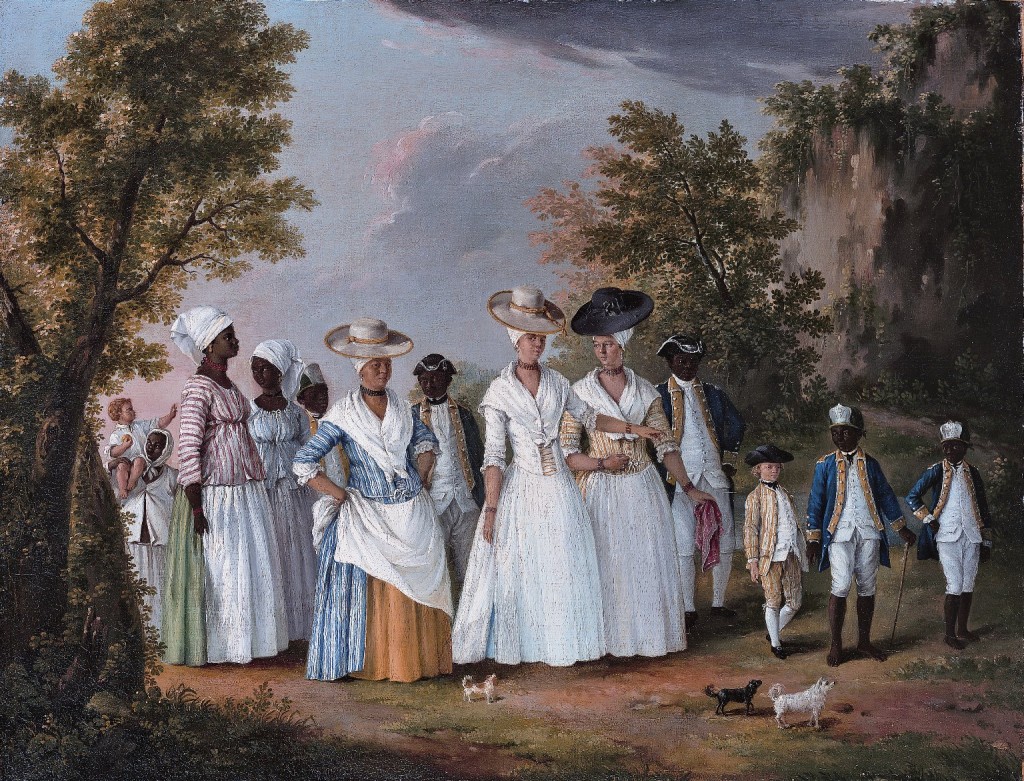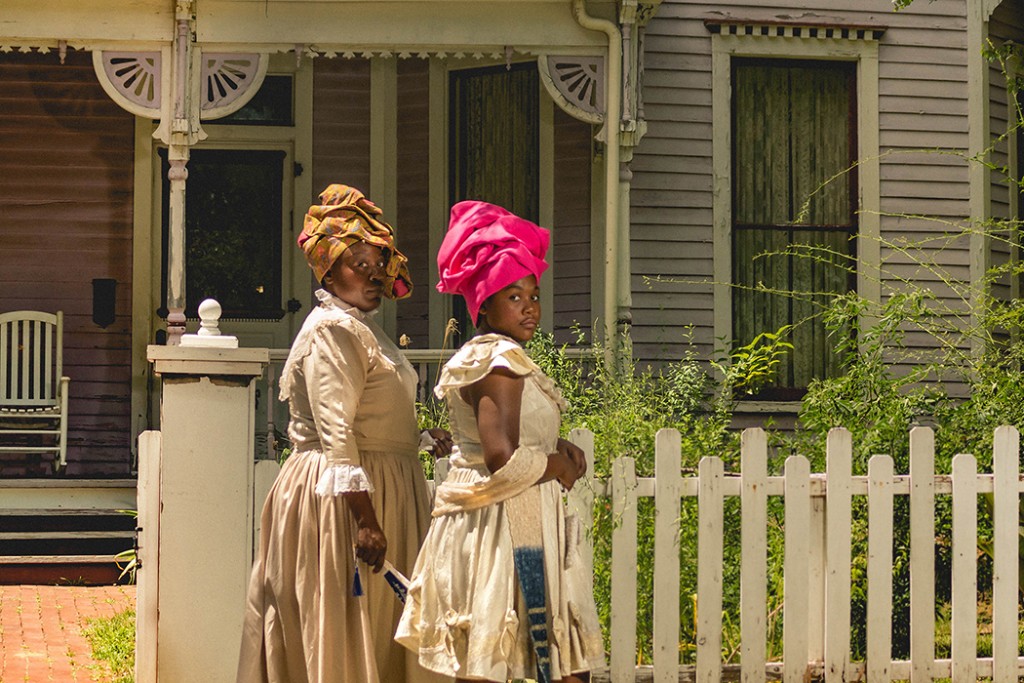A Tool Of Oppression Becomes A Fashion Statement: Exploring The History Of The Headwrap
ArtandSeek.net December 14, 2020 96
Agostino Brunias (Italian, ca. 1730-1796). Free Women of Color with Their Children and Servants in a Landscape, ca. 1770-1796. Oil on canvas, 20 x 26 1/8 in. (50.8 x 66.4 cm). Brooklyn Museum, Gift of Mrs. Carll H. de Silver in memory of her husband, by exchange and gift of George S. Hellman, by exchange, 2010.59 (Photo: Brooklyn Museum, 2010.59_PS6.jpg)
Artist and educator Chesley Antoinette has been accessorizing with the head wrap for more than 10 years. She started in her early 20s and it became a part of her personal identity.
Then, searching for inspiration for her artwork, she became interested in learning how the headwrap relates to various cultures. That’s when she came across Louisiana’s Tignon Law of 1786.
“The 18th century law was unique to the Louisiana Territory and it was specifically targeted towards the free woman of color,” said Antoinette.

‘New Orleans’ Photo: JD Moore
“The Spanish government (which was in power in Louisiana at the time) saw the headwrap as having symbolic ties to the slavery population. Free women of color were of a higher social status and economic freedom than black slaves and the Spanish government didn’t want these women to have the same social status or be equal to white Spanish women. They wanted them to be equal to the black slave population. And so in their mind, if the women of color could be made to wear this accessory it will lower them visually into a lower status publicly.”
But the law created to oppress beauty and mobility in women of African descent had the opposite effect.
“It is said through some writings, that they embraced the headwrap. And they embraced it in ways in which the slave population could never do so,” said Antoinette. “They had access to various types of fabrics and prints, and then they would accessorize them with feathers, bows and jewelry. And so, if anything, it set them apart even more.”

Chesley Antoinette demonstrates technique at the Heart of the Headwrap Workshop Series at North Oak Cliff Library, Dallas, Texas 2017. Photo: Brittney Dubose
Antoinette is sharing her knowledge of the history of the headwrap as it relates to Louisiana in a virtual workshop hosted by the Dallas Contemporary. The Heart of the Headwrap workshop consists of a 30-minute presentation highlighting the events and reasonings leading up to the Tignon law, followed by an interactive portion, which includes audience questions and headwrap styling techniques led by Antoinette. Participants will receive their own headscarves shipped directly to their home prior to the workshop.
Antoinette says the workshop is for anyone who is interested in history, especially North American history.
“Secondly, if you’ve ever had a a like, or a love for, styling yourself with the headwrap and want to have a little bit of the history surrounding it–that’s another good reason to sign up!
Got a tip? Email Therese Powell at tpowell@kera.org. You can follow her on Twitter @TheresePowell13
Art&Seek is made possible through the generosity of our members. If you find this reporting valuable, consider making a tax-deductible gift today. Thank you









